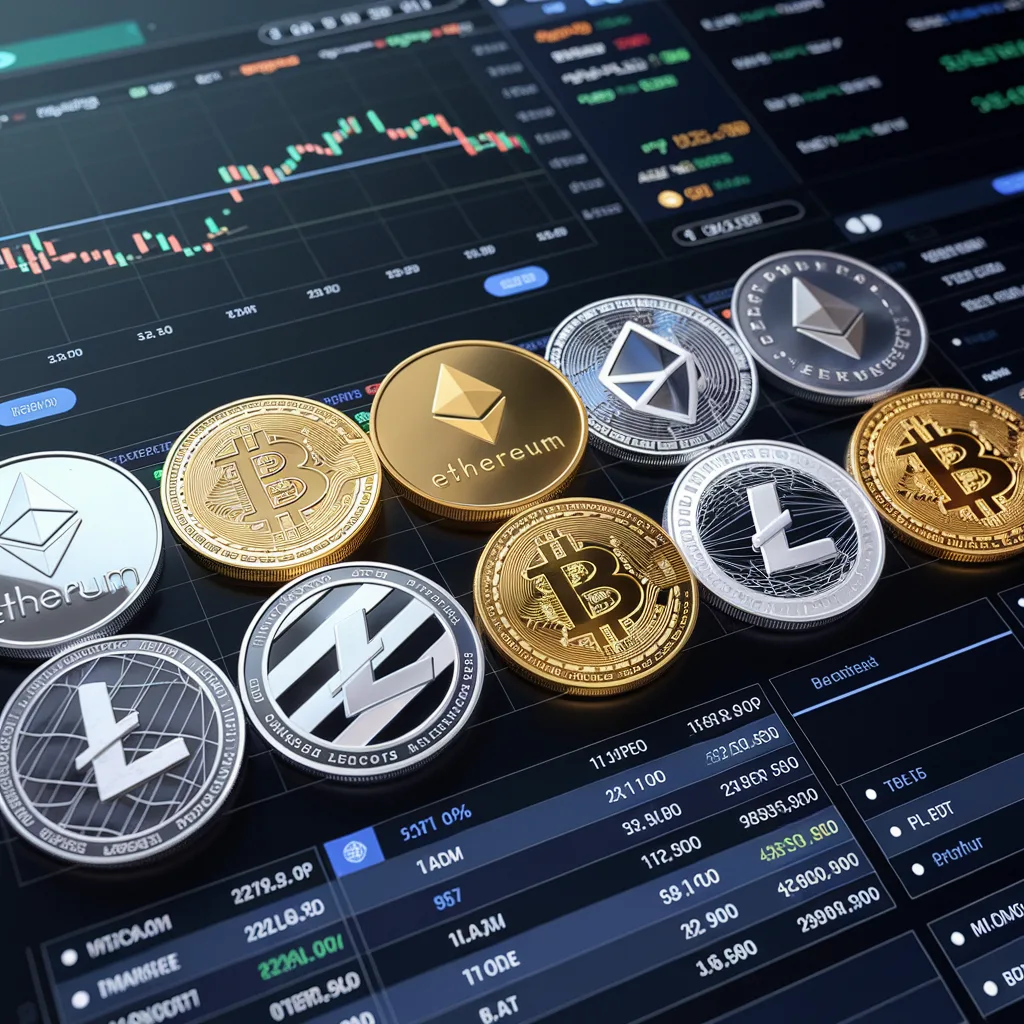Crypto Bull Market Guide: How to Spot and Trade the Bulls

The bull market in cryptocurrencies: a complete guide in a period of growth
A bull market in cryptocurrency is a period when asset prices are rising and investors are showing optimism. Understanding the mechanisms of the bull market is a key factor for successful investing: if you learn to identify periods of growth, the first profit will not be long in coming.
In this article, we will go through the basics of a bull market in detail, learn how to identify it, how to determine its duration, and how to trade it effectively.

Understanding Bull Markets
Definition and Characteristics
A bull market is so called because of an analogy: when a bull beats its horns, it does so from the bottom up. In the case of a rising market, the price also comes from the bottom up.
A bull market is characterized by steady price growth over a long period of time. According to CoinGecko, between November 2023 and January 2025, the total cryptocurrency market capitalization increased from $1.2 trillion to $2.1 trillion. That's about 75% growth in 14 months.
Bull vs Bear Markets
Bear markets are also named for an analogy: when a bear strikes with its paw, it does so from the top down. This is why the down cycle in the market is called a bear market.
A bear market is characterized by a price drop, usually by more than 20% of the ATH (maximum level in history) of one asset or the market as a whole. For comparison, bitcoin fell from $20,000 to $3,200 during the 2018 "cryptozyme."
If a bull market is like an elevator ride up, a bear market is more like going down the stairs - slower, but steady.
Market Psychology
Optimism prevails in a bull market. Investors are willing to pay more for assets, expecting further growth. This creates a positive feedback loop: growth attracts new participants, which reinforces the trend. However, it is important to keep in mind the FOMO (fear of missing out on gains) phenomenon, which can lead to irrational decisions.
Typically, FOMO appears to market participants at a time of rapid growth in an asset or market. Inexperienced investors try to make up for lost profits and start buying an asset at the moment when its growth has almost used up: this is usually followed by a small correction. As a result, investors who have recently bought bitcoin, for example, are left either with their investments or with losses if the correction was prolonged.
A recent example of the FOMO phenomenon is the launch of the meme coin TRUM, which made a huge profit for early investors. However, for all those who bought it after the $70 mark, TRUMP made a loss, because a correction followed.
The Difference Between a Bubble and Healthy Growth
A bubble is characterized by unjustified price increases without a fundamental justification. For example, during the "cryptozyme" of 2018, many projects showed high growth, but without a real basis. Large capitals began to come to the market to invest in ICOs and make a profit. However, in reality, most of the fees then turned out to be a scam: fraudsters simply appropriated their investments. As soon as the public realized this, the crypto market capitalization began to decline rapidly, because the market had no real growth factor - it turned out to be a bubble.
Healthy growth is supported by fundamental factors: development of technology, growth in the number of users, expansion of applications. Throughout 2024 and early 2025, the market can see healthy growth: large and institutional investors come in, media and publications talk about digital assets, new projects and technologies appear.

Identifying a bull market
Key indicators
Trading volume, RSI, MACD and other technical indicators help to identify the trend. For example, at the end of 2024, BTC trading volumes on Binance reached a record high of $30 billion per day: this indicates that the main cryptocurrency is in demand, it is bought and sold. At the beginning of 2025, trading volumes have slightly decreased, but still remain at a high level.
Technical Analysis
Use chart patterns, support/resistance levels and trend lines. The formation of the "golden cross" often heralds the beginning of a bullish trend. Also pay attention to formations such as "head and shoulders", "triangle" and "resistance level breakout". In one of our videos and in an article we looked at the differences between technical analysis and onchain analysis.
Market Signals
News background, macroeconomic factors and the actions of major players can provide important clues about market conditions. Keep an eye out for news from regulators, large companies (such as the MicroStrategy acquisition) and financial institutions.
As an example, consider the approval of BTC-ETFs: in the fall of 2023, there were rumors of the imminent approval of funds with bitcoin as the underlying asset. This news alone helped BTC rise from $30,000 to $42,000.
Bull Market Duration
Historical patterns
Analyzing previous cycles shows that the mediocre duration of a cryptocurrency bull market is about 18-24 months. Let's analyze some historical examples:
-
2016-2017 bull market: 19 months. The beginning of the cycle was marked by an increase in interest in cryptocurrencies. Amid the hype around ICOs as well as public acceptance of bitcoin, its value increased from $400 at the start of 2016 all the way to a landmark high of $20,000 in December 2017;
-
Bull Market 2020-2021: 22 months. This turnover was combined together with numerous institutional interest in the main cryptocurrency. In such a case, after all the period, individual traders rapidly returned to the exchange. BTC went from $9,000 at the start of 2020 all the way to an unprecedented $69,000 in November 2021;
-
The present cycle (as of the month of 2025): Fourteen months. The turnover occurred together with the resumption already after the bear market, the latest regulatory actions as well as the consent of the BTC-ETF. At the beginning of 2025, the value of BTC will change around $95,000 - $105,000, demonstrating the potential for further growth.
Cyclical Analysis
Each cycle in the cryptocurrency market goes roughly as follows:
-
The price of all digital assets begins to rise;
-
Because of the rise in the price of the crypto market as a whole, the media and online participants who were not previously involved in the crypto industry begin to pay attention to it. Information about cryptocurrencies begins to be discussed in social networks and forums;
-
Among the new arrivals there are those who bring new ideas for the crypto industry. At the same time, the price of digital assets begins to correct;
-
Later, ideas grow into projects and startups;
-
Having overcome the period of formation of these projects and startups, a new cycle begins, which leads to the rise in the price of digital assets and attracts a new audience to the industry, thus provoking a new cycle.
It turns out that as soon as one cycle ends, the next one begins to emerge. However, it is often not without correction: at such times it is better not to trade, but to wait out excessive volatility, for example, in stablecoins.

Timeline
Every time the phase of a bull market depends on market conditions, news background, and regulators' actions. Let's analyze the situation we have now:
-
Market conditions. At the beginning of 2025, positive market sentiment prevails. Traders and investors are confident in the continuation of the bull cycle, and therefore do not seek to sell accumulated assets or exit deals;
-
News background. The elections in the U.S. made a bunch of “noise” on the crypto market: Donald Trump proposes to make the state reserve out of bitcoins, Ilon Musk continues to pummel DOGE in social networks, and Americans, thanks to this, begin to invest more in cryptocurrencies;
-
Regulators' actions. The SEC has not brought any new high-profile cases regarding the crypto market in 2025. Moreover, the multi-year trial between Ripple and SEC is coming to an end, where it seems that the cryptocurrency representative will be the winner.
Based on this, we can say that the market now has all the factors to continue the bullish cycle.
Trading Strategies
Selecting Entry Timing
Use corrections to enter positions. Do not try to guess the exact top or bottom. Consider the dollar-cost averaging (DCA) strategy: regularly investing a fixed amount regardless of price. You can choose a time period and cyclically buy, for example, bitcoin, for small amounts. As a result, the average purchase price will be more balanced and less susceptible to sudden market fluctuations. This strategy helps reduce the risks associated with trying to identify the perfect moment to enter the market.
Position Management
Review your positions regularly, use a trailing stop to protect profits. Example: if BTC went from $90,000 to $100,000, set a trailing stop at $97,000 to preserve some of your profits.
Risk Control
Never invest more than 5% of your portfolio in a single asset. Use hedging to reduce risk. For example, you can use futures to protect your core portfolio. Suppose you hold $10,000 worth of bitcoin. To hedge against a possible drop in its value, you could open a short position in the futures market by selling a contract for the equivalent amount ($10,000). If the price of bitcoin falls, the loss in your spot portfolio will be offset by the gain from the short position.
Exit Planning
Determine Take-profit and Stop-loss levels in advance. Don't let emotions influence your decisions. Consider the 20-40-60 rule: take 20% when the first target is reached, 40% when the second target is reached, and hold the rest until a possible top.
Investment Approaches
Portfolio Diversification
Distribute investments among different assets: BTC (40%), ETH (30%), altcoins (20%), and stablecoins (10%).
Asset selection
Focus on projects with a strong team, an exceptional provisioning and a real user base. Let's look at examples: Solana, Polkadot, TON - all of them without exception revealed a significant increase due to the result of their scientific and technical advantages. But without exception, this is in no way a recommendation to buy.
Consider leverage
Use margin trading cautiously. It is recommended to start with small leverages (2-3x). That said, it is important to realize that using leverage increases both potential profits and risks.
Risk Management
Bull Traps
These are situations when it seems that the market starts to rise, but then there is a sharp fall. It is important to distinguish them from a true trend. Example: the summer of 2024, when there was a temporary rise amid regulatory news, but then a fall followed.
Market tops
Look out for signs of overheating: excessive optimism, high volumes and slowing growth. Watch the Fear & Greed Index, which shows the current psychological situation in the market: if the index is high, the market is dominated by greed.
Position Size
Use money management to determine the optimal position size. Example: if your portfolio is $100,000, your maximum position in one asset should not exceed $5,000.
Protection Strategies
Insure positions through derivatives, use stop orders, and regularly reevaluate your portfolio. Let's look at an example of using options: let's say you have 1 BTC bought for $50,000 and you want to protect yourself from a price drop. You buy a put option with a strike price of $45,000 and a premium of $1,000. If bitcoin falls to $40,000, you can sell it at $45,000. Without the option, the loss would be $10,000, but with the option, the loss is only $6,000 ($5,000 difference + $1,000 premium), which helps minimize risk.
Conclusion
Successful trading in a bull market requires a comprehensive approach: understanding market mechanisms, using the right tools such as those from ArbitrageScanner and strict risk management. We especially advise you to pay attention to our sentiment product, it will help in determining the mood of the market and the mood of the asset as a whole. Remember that even in the most favorable periods it is important to maintain discipline and common sense. Otherwise, even in a bull market you will not be able to make money.
Frequently Asked Questions
How can I identify the beginning of a bull market?
Watch key indicators, trading volumes and news background. Pay attention to the formation of new highs and confirmation of the trend by major players.
What are the best strategies for trading a bull market?
Buy and hold, pyramiding, trailing stops, using corrections to enter positions. Consider swing trading and positional trading strategies as well.
How long do bull markets in cryptocurrency usually last?
On average 12-24 months, but each cycle has its own peculiarities. It is important to watch out for trend termination signals.
How to avoid bull traps?
Use technical analysis, watch trading volumes and don't make decisions on emotion. Consider using indicators such as OBV and Chaikin Money Flow.
When should you take profits in a bull market?
When you reach your planned targets or when the market shows signs of overheating. Consider the strategy of partially closing positions in stages.
Want to learn more about crypto arbitrage?
Get a subscription and access the best tool on the market for arbitrage on Spot, Futures, CEX, and DEX exchanges.




